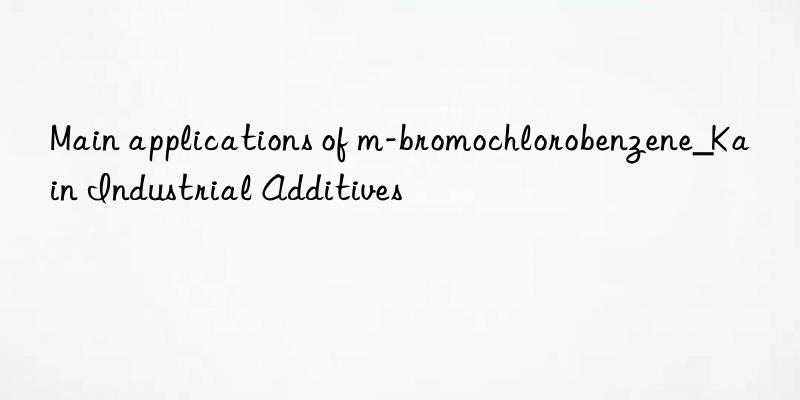
Background and overview[1]
There are three isomers of chlorobromobenzene. That is, o-bromochlorobenzene, m-bromochlorobenzene, and p-bromochlorobenzene. Relative molecular mass 191.46. All three compounds are toxic and much more potent than the corresponding dichlorides. Meta-bromochlorobenzene is also called 1-chloro-3-bromobenzene. Colorless to light yellow liquid. Relative density 1.6302. Melting point -21.5℃. Boiling point 196℃. Refractive index 1.5771. Flash point 80℃. Insoluble in water, soluble in ethanol and ether.
Application
Meta-bromochlorobenzene can be used as an organic synthesis intermediate and solvent. Examples of its applications are as follows: used in the synthesis of the organic synthesis intermediate 4,5-dichloro-1,8-naphthalenedicarboxylic anhydride, including the following steps : Add 1,8-dihydroxymethyl-4,5-dichloro-6-hydroxynaphthalene and potassium chloride solution into the reaction vessel, increase the solution temperature, control the stirring speed, and add 1,3-propanesulfonic acid Ester solution, react for 90-120 minutes; add ytterbium oxide powder, continue the reaction, raise the temperature, reflux, add oxalic acid solution, adjust the pH, lower the temperature, precipitate crystals, wash with 4-chlorotrifluorotoluene solution, m-bromochlorobenzene solution Wash, recrystallize in β-chloronaphthalene solution, and dehydrate with a dehydrating agent to obtain the finished product 4,5-dichloro-1,8-naphthalenedicarboxylic anhydride.
Preparation[1]
Using m-chloroaniline as raw material, mix it with concentrated hydrobromic acid to lower the temperature to 0°C. While stirring, quickly add sodium nitrite aqueous solution to nitrogenate o-chloroaniline to generate a diazonium salt. During the reaction The temperature should be controlled not to exceed 10℃. Then use Sandmeyer reaction, add catalyst cuprous bromide and hydrobromic acid to the reaction system to decompose the diazonium salt. The decomposition reaction is carried out at boiling temperature. After the reaction is completed, let it stand, take out the organic layer below, wash it with water, and After drying to remove water and distillation under reduced pressure, m-bromochlorobenzene can be obtained.
Main reference materials
[1] Practical Fine Chemical Dictionary
[2] CN201710459355.0 Synthesis method of organic synthesis intermediate 4,5-dichloro-1,8-naphthalenedicarboxylic anhydride

 微信扫一扫打赏
微信扫一扫打赏

